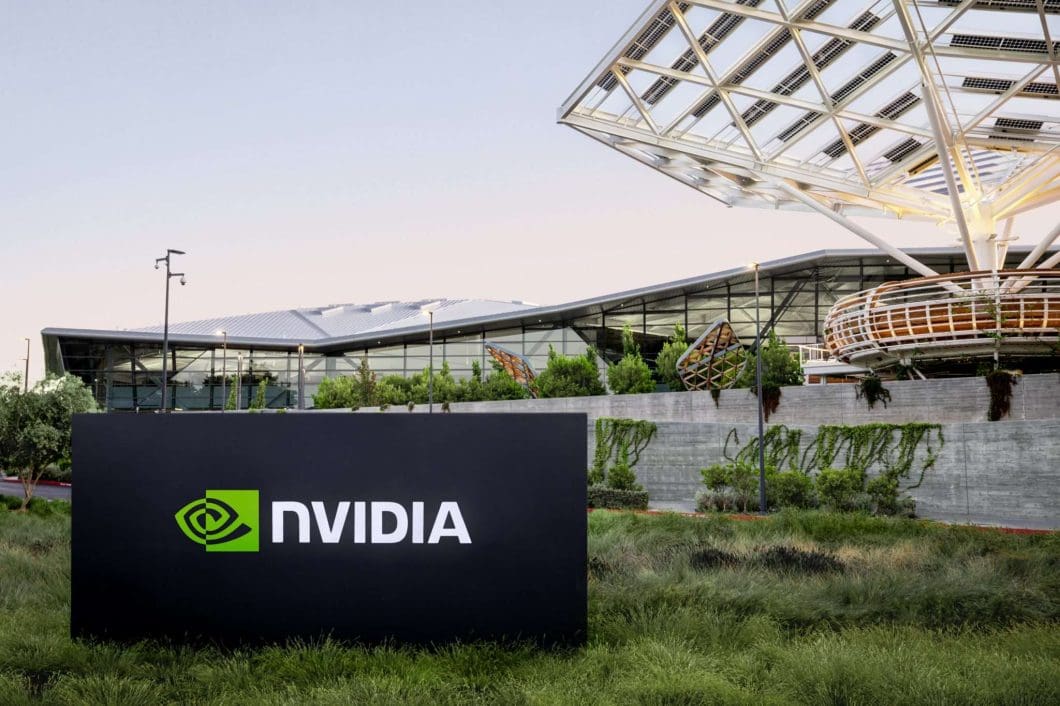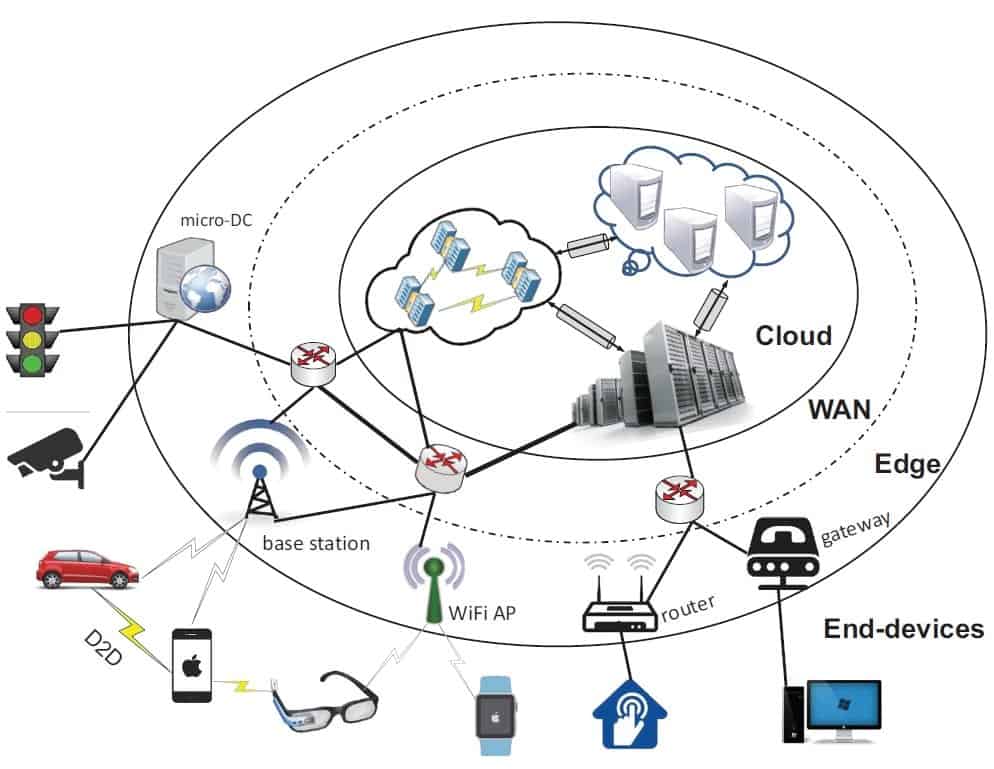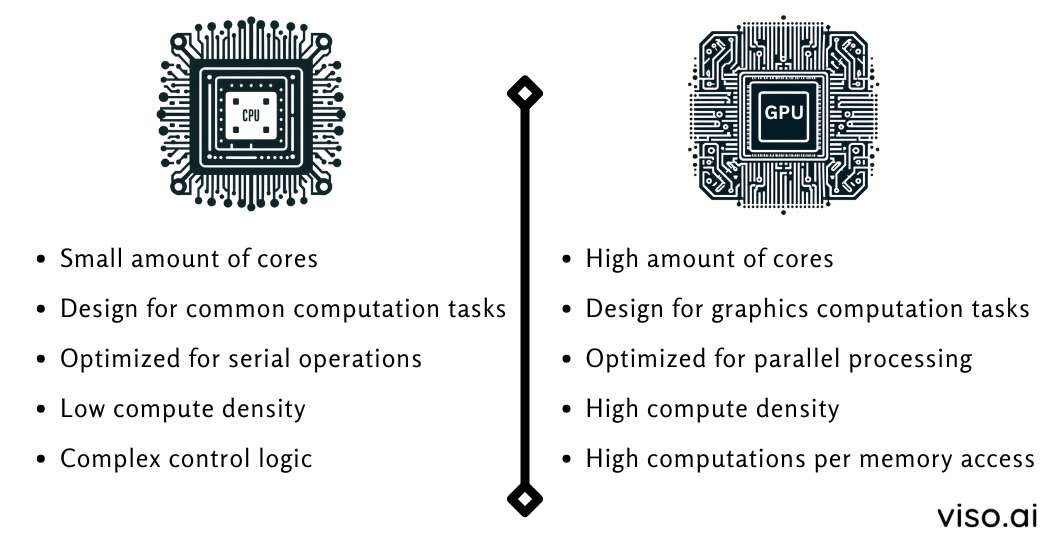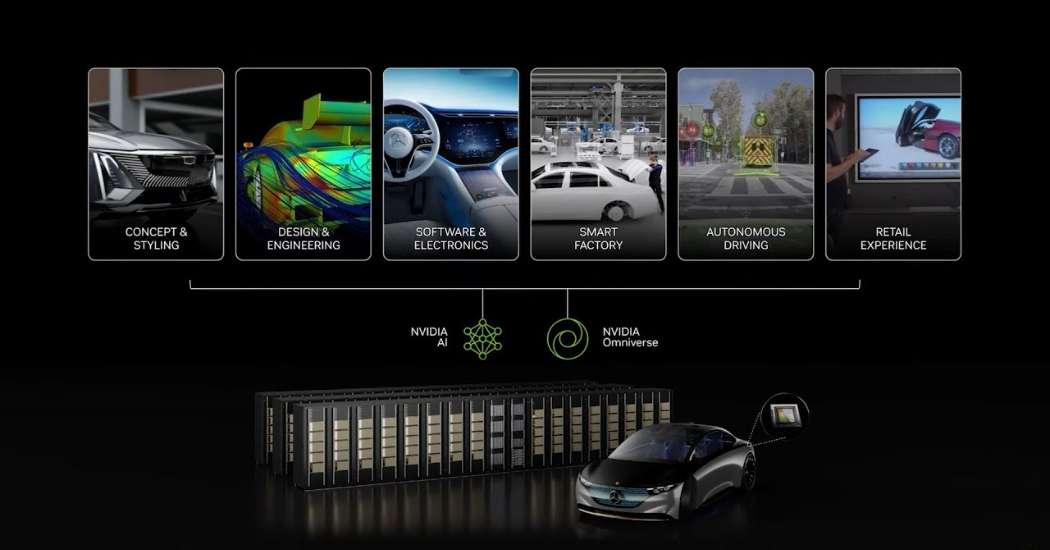On June 18 (2024), NVIDIA dethroned Microsoft to become “the most valuable company in the world.” The market capitalization of this American multinational tech corporation hit $3.34 trillion by overtaking Microsoft’s $3.32 trillion valuation.
NVIDIA’s meteoric rise is attributable to the company’s dominance in a red-hot sector: Artificial Intelligence (AI). It has now become a leading supplier of specialized GPUs and chips for AI systems worldwide. Industry experts often call these AI processors “the new gold or oil in the tech industry.”

How did NVIDIA Get Here?

Repurposing Their GPUs for AI
NVIDIA saw future potential in its Graphics Processing Units (GPUs) for a new frontier: Artificial Intelligence. The company realized its graphics chips could do more than power games. These GPUs (advanced micro devices) excel at handling the complex parallel tasks that AI thrives on. So they introduced a whole new use for their best-selling product lines.
Early Investments in AI Hardware and Software Development
The company recognized the future potential of AI systems when they were still in their early stages. They didn’t wait for AI to become a hot topic; they jumped right in and started developing hardware and software specifically designed for AI applications. This head start gave them a huge advantage.
Constant Product Line Innovation
They have a strong track record of innovation. They constantly develop new and improved chip designs and look for ways to make their AI hardware even more powerful. This focus on cutting-edge tech keeps them at the forefront of AI hardware development.
Building a Complete AI Ecosystem
It’s not just about the chips anymore. NVIDIA realized that companies needed more than just powerful hardware to use AI effectively. That’s why they built a whole ecosystem of software, tools, and partnerships that make it easier for companies to use AI.
Dominating Data Centers With Own Hardware and Software
As AI became more powerful, it also needed more muscle behind it. That’s where NVIDIA’s chips came in. Because they were so good at handling complex calculations, they became the go-to choice for big tech companies building massive data centers. These data centers are like the brains of AI, and NVIDIA’s data center chips are the supercharged neurons powering them.
Core Business Offerings of NVIDIA
NVIDIA’s growth and success stem from its innovative line of products and services.
Let’s take a look at their core business offerings:
Graphics Processing Units (GPUs)
NVIDIA builds powerful Graphics Processing Units (GPUs) that are the heart of their business. It offers a wide range of GPUs to gamers and data scientists. These may include consumer-grade graphics cards for gaming and content creation to high-performance computing (HPC) solutions for data centers and AI research. Their latest GPU architectures (such as Ampere and Hopper) are incredibly powerful for handling AI tasks.
These advancements make the company’s GPU technology essential for gamers as well as for those working in deep learning and machine learning.
Cloud and Data Center Solutions
The company helps businesses with cloud computing and data centers. They offer powerful tools like DGX systems which are basically supercomputers built specifically for running AI models. For really large data centers, NVIDIA also has HGX platforms.
Moreover, to make sure every AI model runs smoothly and quickly, NVIDIA creates fast and reliable networking technology like Mellanox InfiniBand and Ethernet solutions. This special technology keeps data moving fast with minor delays which is important for AI and High-Performance Computing (HPC).

Automotive and Edge-Computing Solutions
They developed a powerful platform for self-driving cars called DRIVE AGX. This all-in-one package includes all the hardware, software, and AI toolkits you may need to create automated driving features and immersive in-cabin experiences.
In addition, NVIDIA offers Jetson modules. These modules are powerful mini-computers designed for robotics, internet-connected devices (IoT), and other applications that use artificial intelligence at the network’s edge.
Software and Ecosystem
They have built a comprehensive software ecosystem to support their hardware offerings. They offer a variety of tools for different uses:
For developers: CUDA is a toolkit that lets programmers easily write programs that run faster on NVIDIA GPUs. This is useful for all sorts of demanding tasks, like scientific computing and video editing.
For deep learning experts: cuDNN is a library specifically designed for building and training artificial intelligence systems, especially those that use deep learning techniques.
Industry-specific solutions: They also offer complete frameworks and libraries that make it easier to tackle specific tasks. For example, Clara helps healthcare professionals analyze medical images and data, while Metropolis provides tools for building smart city applications.
NVIDIA’s GPUs are More Than Just Graphics Cards
Traditional CPUs are great at following instructions one by one, but they struggle with parallel processing. AI systems need to handle many calculations at once, which is where NVIDIA GPUs come in. Unlike CPUs, GPUs have thousands of cores, allowing them to crunch massive amounts of data for AI tasks much faster. This parallel processing superpower makes NVIDIA GPUs ideal for speeding up AI.
To make this possible, NVIDIA created the CUDA platform. CUDA acts as a translator, letting programmers use GPUs for various tasks, including AI. This has made NVIDIA GPUs super popular in AI research and development for both universities and businesses.
NVIDIA keeps improving its GPUs to better handle AI. For instance, Tensor Cores are designed specifically to speed up deep learning calculations, while RT Cores tackle advanced graphics and AI rendering super efficiently.
And that’s not all! NVIDIA even built special-purpose architectures focused on AI workloads. Take the NVIDIA A100 Tensor Core GPU, for example.
Based on the Ampere architecture, it delivers amazing performance for training and running AI tasks. Plus, it has MIG technology, which allows a single GPU to be split into sections, each with its resources, so you can handle different tasks at the same time.

Providing the Brain of Autonomous Systems
NVIDIA’s artificial intelligence (AI) technology is giving brains to machines in many ways, not just for self-driving cars. It is equally providing solutions for robotics, drones, and other autonomous systems. Here’s how:
- Cars That Drive Themselves: DRIVE provides everything needed to build and deploy self-driving vehicles. It includes powerful computer chips (DRIVE AGX Orin) and software (DRIVE) that can see the road, plan a route, and control the car.
- Smarter Robots and Drones: Jetson packs powerful AI into small devices for robots and drones. These tiny computers use very little energy but can still do complex tasks like spotting objects, understanding voices, and even having conversations.
- Building Robots Made Easy: Isaac offers a complete set of tools to create robots powered by AI. It includes software for training robots in a virtual world and special libraries to help robots see, move around, and interact with their environment.

The Future Landscape: As AI Heats Up, So Does NVIDIA
NVIDIA is ready to profit from the rising need for AI technology. The company has a strong market position and multiple product portfolios. The added benefit is that NVIDIA is constantly innovating its product lines according to the growing demand of the AI industry.
Here is what we predict for NVIDIA’s future:
- Development of more specialized AI processors and the exploration of new chip designs
- Expansion of its software solutions and APIs for simplified AI development
- Combining quantum computing with AI for faster processing.
- Development of more efficient processing centers and technology for a renewed focus on sustainability in tech
- An increase in investments in ethical practices in AI, e.g., bias reduction and Explainable AI
